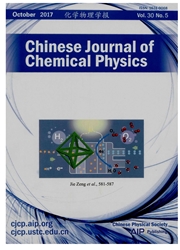

 中文摘要:
中文摘要:
较高的体积功率密度是微管固体氧化物燃料电池(mtSOFC)商业化成功的基础.为了找到阳极支撑mtSOFC的最大体功率密度(MVPD),本文分析了几何参数对体积功率密度的影响,发现阳极厚度tan和阴极长度lca对参数设计起关键作用,并建立了热流动电化学模型来检验功率密度的输出对电池参数的依赖性.在不含其它可调参数的前提下,拟合了实验I—V曲线,验证了多物理场模型的有效性.在1073.15K的温度下,利用多物理场模型计算了20组内管半径与阳极厚度的组合,确定了最佳的lca和相应的MVPD.结果表明:(1)通过几何优化可以实现微管电池显著的性能提升,(2)微管电池阳极单边收集和双边收集通过优化分别可以达到11和14W/cm^3的最大体功率密度.此外,对于三个代表性(rin,tan)组合,lca在(2rnm,40mm)的范围内变化,确定了面功率密度与阴极长度的关系.最后,证明了通过适当的几何参数设计,mtSOFC输出的面功率密度可以与平板SOFC的电流输出相当,显示了微管电池在较高电性能输出方面的巨大潜能.
 英文摘要:
英文摘要:
High volumetric power density (VPD) is the basis for the commercial success of micro-tubular solid oxide fuel cells (mtSOFCs). To find maximal VPD (MVPD) for anode-supported mtSOFC (as-mtSOFC), the effects of geometric parameters on VPD are analyzed and the anode thickness, tan, and the cathode length, lea, are identified as the key design parameters. Thermo-fluid electrochemical models were built to examine the dependence of the electrical output on the cell parameters. The multiphysics model is validated by reproducing the experimental I-V curves with no adjustable parameters. The optimal lea and the corresponding MVPDs are then determined by the multiphysics model for 20 combinations of rin, the inner tube radius, and tan. And all these optimization are made at 1073.15 K. The results show that: (i) significant performance improvement may be achieved by geometry optimization, (ii) the seemingly high MVPD of 11 and 14 W/cm^3 can be easily realized for as-mtSOFC with single- and double-terminal anode current collection, respectively. Moreover, the variation of the area specific power density with/cac(2 mm, 40 mm) is determined for three representative (tin, tan) combinations. Besides, it is demonstrated that the current output of mtSOFC with proper geometric parameters is comparable to that of planar SOFC.
 同期刊论文项目
同期刊论文项目
 同项目期刊论文
同项目期刊论文
 期刊信息
期刊信息
